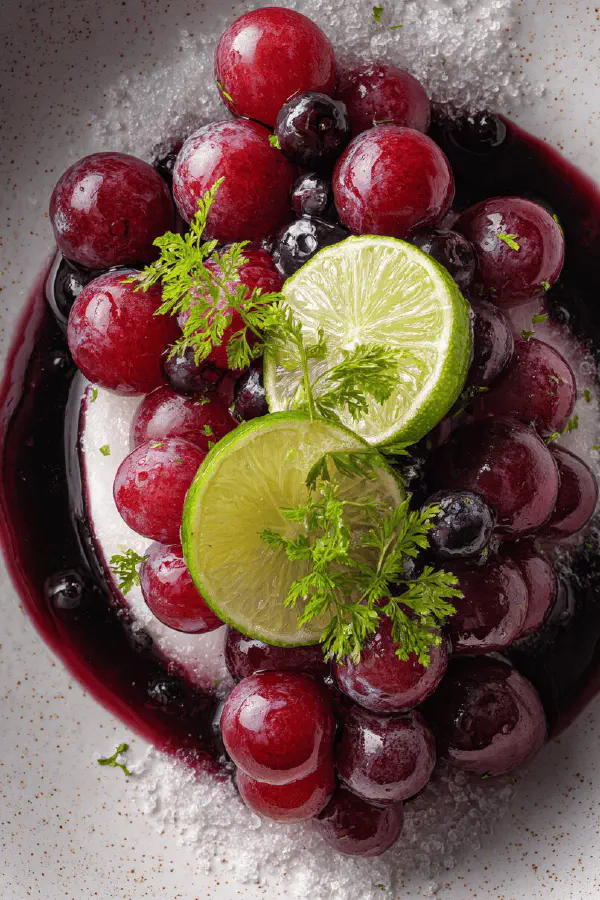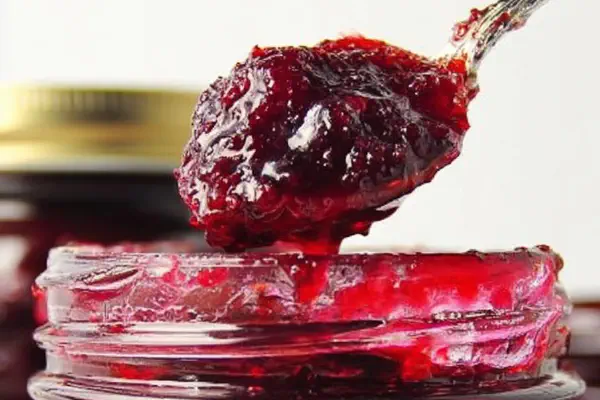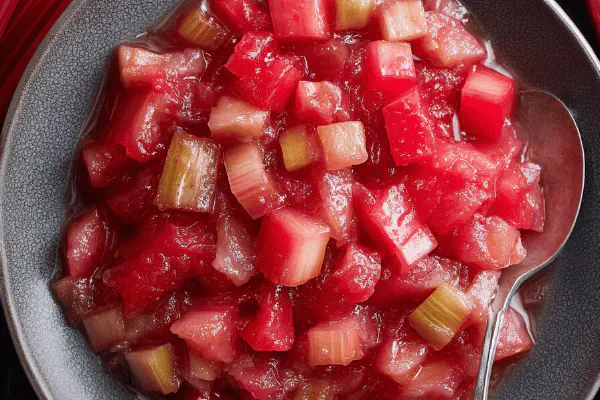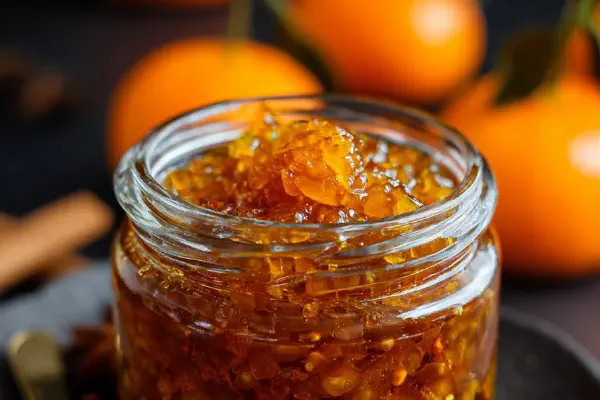Featured Recipe
Concord Grape Jelly Twist

By Kate
"
A fruit-forward jelly with slight acidity and depth. Uses lime juice for a brighter tang and honey to replace some sugar, lending complexity and smooth sweetness. Grapes simmered slowly till skins start to pop, juice carefully extracted without pressing to avoid bitterness. Cooking juice with sweetener melds flavors, temperature key for setting. Clean jars a must for shelf life.
"
Prep:
20 min
Cook:
Total:
Serves:
About 5 jars of 250 ml
jelly
preserves
grapes
sweet spreads
Introduction
Grape jelly—sounds simple, but get it wrong and it’s a sticky mess or flavorless goo. Concord grapes pack a punch, tart yet deep, skins full of pectin. Crush gently, don’t pulverize. Heat slowly, let the aromas curl from the pot. Using lime juice instead of lemon adds a bright edge without sharpness. Honey? Adds body, a floral note you don’t get with straight sugar. The difference shows in the spread’s mouthfeel and sheen. Extract juice patiently. Let it drip—forcing pulp ruins clarity and texture. Watch the bubbling, foam skimming is a must or bitterness sneaks in. Temperature is your gauge: too low, runny; too high, brittle. You want that perfect jiggle, and a glance at the thermometer reveals the science behind the set. Cleaning jars is not optional; air and impurities spoil the shelf life faster than you think. After sealing, flip briefly to get rid of trapped air. Chill wait, then taste. The color should be translucent, scarlet to ruby red, not dull or muddy. Bitterness? Too much pressing or uneven heating. That’s your red flag. No shortcuts—if in doubt, wait longer on the draining, and keep heat gentle when boiling. Jelly making isn’t instant gratification, it rewards patience and care.
Ingredients
About the ingredients
Starting with just 3 liters of grapes trims some volume but concentrates flavors. Lime juice works well as a subtle acidity balance; not overpowering like lemon can sometimes be. Honey replaces part of the sugar at 30%, adding richness but check for strong-flavored honeys that overpower fruit. Granulated sugar maintains necessary crystallization. The skin of Concord grapes contains most of the pectin; crushing them enough to break skins without mashing the seeds releases it. Never skip lining the strainer with cheesecloth. Alternative sweeteners like maple syrup or agave can be experimented with but may change set and flavor stability. Always measure juice after draining to adjust sugar-honey ratio precisely. The interplay of acidity, sugar, and pectin controls how the jelly firms up. A good setup here prevents runny or overly stiff results.
Method
Technique Tips
Step one—mash gently. Sound of popping skins guides you. Simmer with no lid to encourage evaporation and concentrate flavors. Then patience draining juice—don’t press, gravity only. Purity of juice here dictates clarity. Measure volume precisely. When heating the sweetened juice, medium heat prevents caramelizing honey. Skim foam as it appears; foam traps bitter bits. Use a candy thermometer; 104°C is critical—tests like spoon-jiggle confirm. Fill hot, sterilized jars promptly to avoid skin forming. Flipping jars seals out extra oxygen, improving shelf life. Cooling time varies by ambient temperature; jelly firms as it chills. Common issues? Too aggressive mashing makes cloudy jelly; overheating brings harsh flavors and brittle texture; forgetting to sterilize leads to spoilage. Patience, temperature control, and gentle handling are everything.
Chef's Notes
- 💡 Start with grapes, clean. Crush gently, just break skins. Don't mash seeds; bitterness can emerge. Aroma changes, watch for fruity hints. That’s progress.
- 💡 Juice extraction takes time; patience pays off. Let it drip freely. No pressing; pulp ruins clarity. Gravity is your friend, let it do the work.
- 💡 Monitor heat closely while boiling. Moderate, gentle simmer. Skim off foam to avoid bitterness. Too high, honey burns; too low, jelly’s too runny.
- 💡 Sterilizing jars isn’t optional. Boil or use hot dishwasher. Keep everything clean or jelly spoils faster. Fill while hot; seal tightly.
- 💡 When cooling, flipping jars helps. Traps air out. Sets better. Wait till it’s cool. Expect jelly to firm as temp drops.
Kitchen Wisdom
How long to extract juice?
Usually 2 1/2 hours or more. Wait. Don’t rush it. Cloudiness from pressing pulp.
What if jelly's too runny?
Could be undercooked or wrong sugar ratio. Check thermometer. Adjust heat. Keep stirring.
Can I use other fruits?
Yes, but remember pectin levels vary. Adjust sweeteners. Every fruit has its balance.
Storage tips?
Keep in cool dark place. Once opened, refrigerate. Use clean utensils. Avoid cross-contamination.



